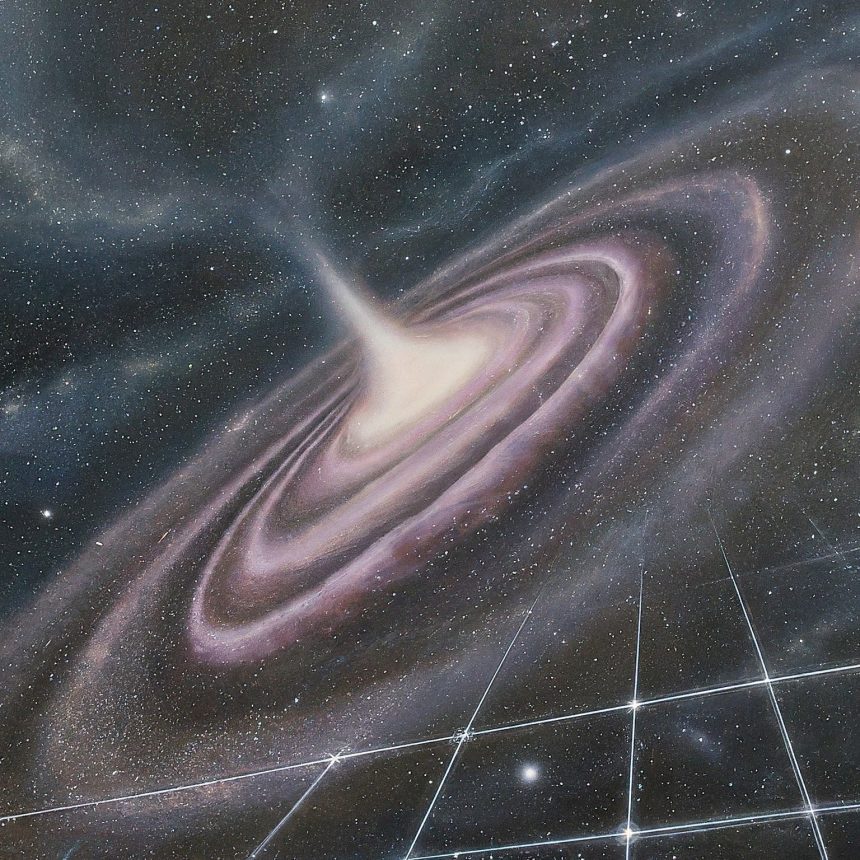Astronomers have embarked on a cosmic odyssey, culminating in the creation of an unprecedented map that traces the vast expanse of the universe, pinpointing the locations of an astonishing 1.3 million active supermassive black holes. This monumental achievement, known as the Quasar and Active Galactic Nucleus Accretion Survey (Quaia), illuminates the enigmatic titans lurking at the core of galaxies, offering new insights into the universe’s most energetic denizens.
Exploring the Universe with Quaia
Quaia stands as a testament to human curiosity, cataloging quasars—galactic lighthouses powered by the insatiable appetite of supermassive black holes at their centers. These cosmic behemoths, vastly outscaling our sun in mass, exert a formidable gravitational force, orchestrating a cosmic ballet of gas and dust that radiates intensely across the electromagnetic spectrum.
The treasure trove of data fueling Quaia’s revelations was sourced from an array of astronomical instruments, notably including the European Space Agency’s Gaia space telescope. Gaia’s precision in charting the stars of the Milky Way has allowed researchers to detect the faint glimmers of quasars, cutting through the cosmic veil to chart their positions across the universe’s expanse.
Quaia’s Three-Dimensional Universe
Quaia’s distinction lies in its ability to map the cosmos not merely in two dimensions but in three, incorporating redshift measurements to gauge the distance of these cosmic titans from Earth. Redshift reveals the extent to which the expansion of the universe has stretched an object’s light, furnishing astronomers with a tool to construct a more nuanced distribution map of black holes across the observable universe.
Revealing a Dynamic Cosmos
The vast collection of black holes chronicled in Quaia underscores a cosmos brimming with activity. Active galactic nuclei, as these regions are known, are pivotal in the narrative of galaxy formation and evolution, their formidable energies capable of catalyzing star birth and molding the intergalactic milieu.
A Voyage Through Cosmic Time
Quaia enables astronomers to journey back nearly to the universe’s dawn, observing quasars that shone forth a mere 1.5 billion years post-Big Bang. This window into the cosmic past offers invaluable perspectives on the genesis and maturation of black holes and galaxies across eons.
Catalyzing Astronomical Inquiry
Quaia not only charts the known universe but also lays the groundwork for future celestial inquiries. By pinpointing black holes for closer examination, astronomers can delve into the enigmas of their origins, growth, and cosmic influence, peeling back layers of mystery surrounding these celestial phenomena.
Unraveling Cosmic Mysteries
In a universe that never ceases to astonish, recent revelations, such as the discovery of a dormant subduction zone beneath the Atlantic, remind us of the vast unknowns awaiting exploration. Quaia’s extensive compendium of black holes promises to spark pioneering research, propelling our quest for knowledge about the cosmos, the intricate roles of black holes, and the unseen forces sculpting the universe’s grand architecture.








